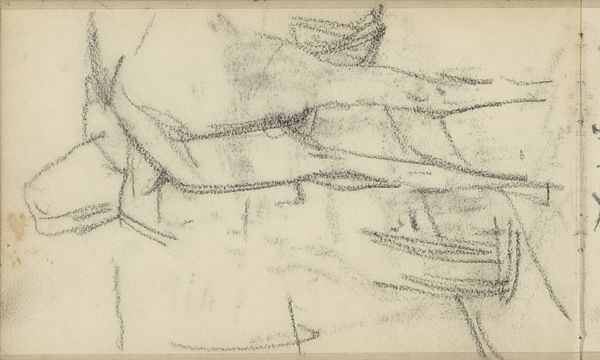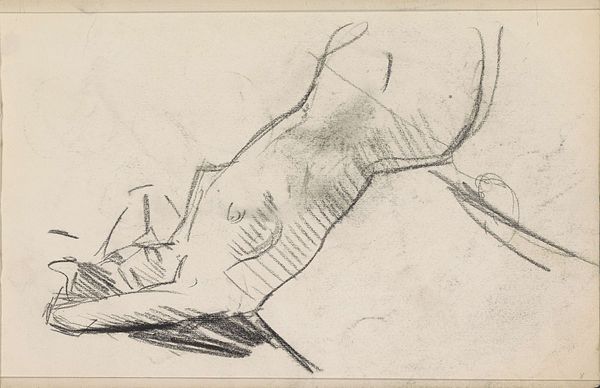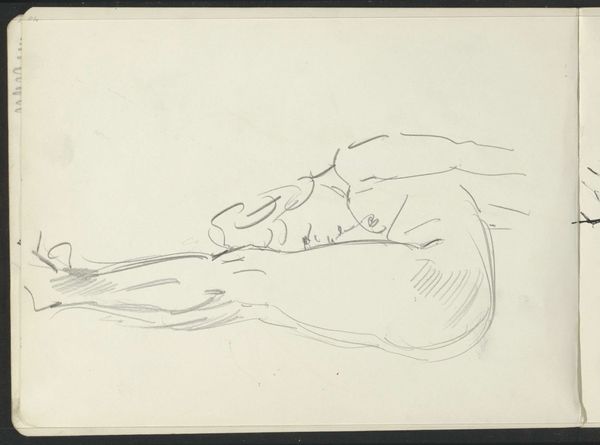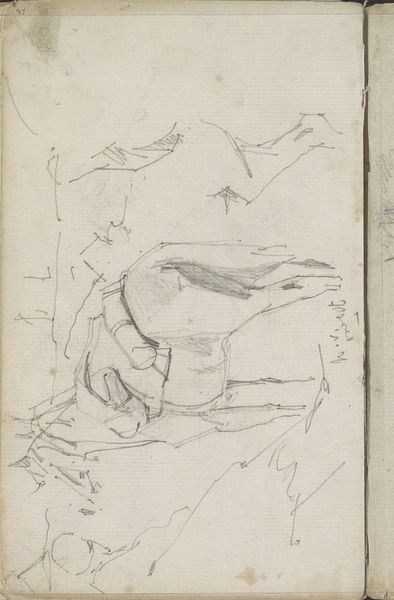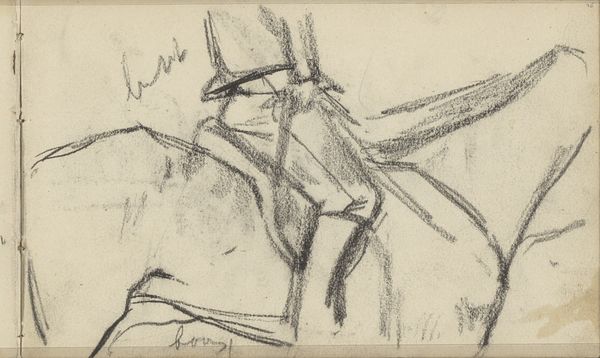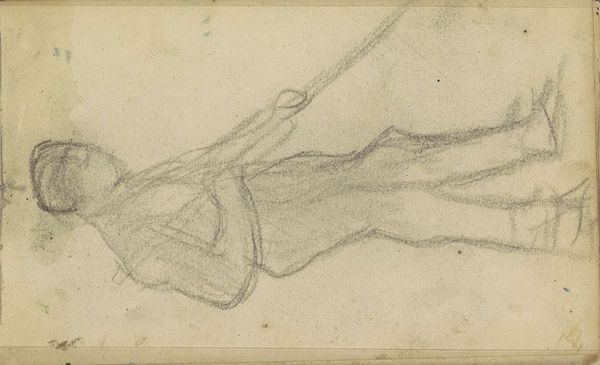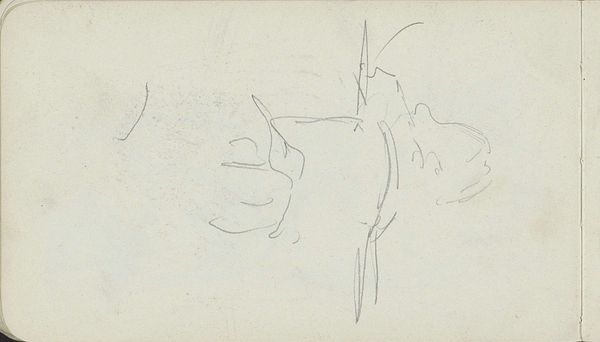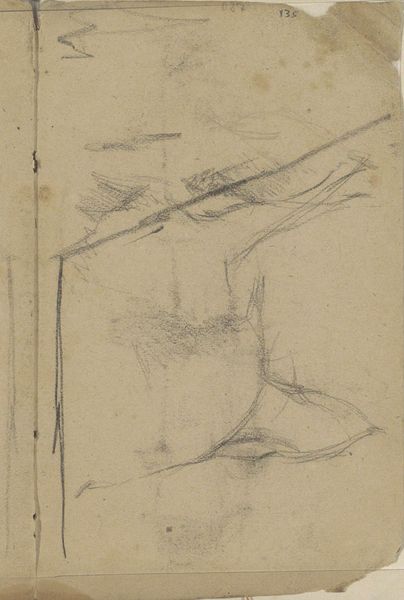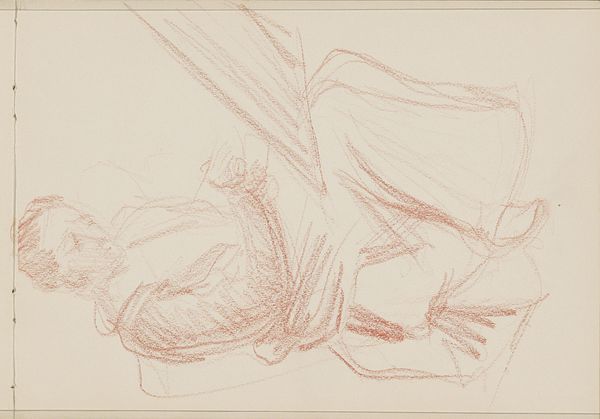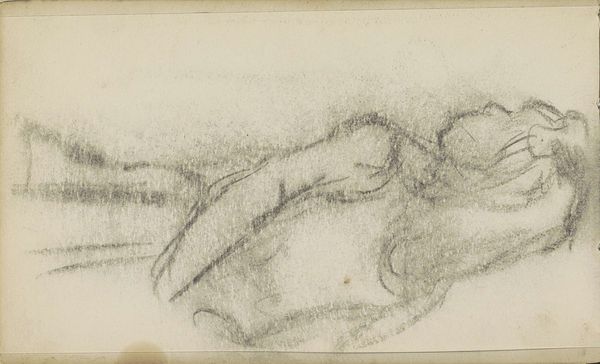
drawing, paper, pencil
#
portrait
#
drawing
#
pencil sketch
#
figuration
#
paper
#
pencil
#
pencil work
#
academic-art
Dimensions: height 90 mm, width 140 mm
Copyright: Rijks Museum: Open Domain
Editor: Here we have a pencil drawing entitled "Schouder en bovenarm" or "Shoulder and Upper Arm" by Reijer Stolk, made sometime between 1906 and 1945. The lines are so delicate, almost hesitant, yet the musculature is evident. What do you see in this piece? Curator: I see more than just an anatomical study. I think we should also ask: what does it mean to render the body, particularly a male body, in this way, at this time? The early 20th century saw a rise in both eugenics and modernist art movements obsessed with the body. Is there something inherently political about choosing to represent musculature with such precision but also such vulnerability? Editor: Vulnerability? I see strength, the clear delineation of the muscle. Curator: But consider the medium. A pencil sketch lacks the permanence of oil paint or sculpture. The arm is presented isolated, almost fragmented, without a clear context. It feels less like a celebration of the male form and more like an examination of it, a taking apart. What does it mean to isolate and examine one aspect of the body in this era? Perhaps it speaks to how power is literally "embodied," inviting us to deconstruct the very notion. Editor: I never thought about it like that. The softness of the pencil versus the traditional heroic male nude... it completely reframes the work. Curator: Exactly. Think about whose bodies have historically been absent from these classical depictions and who benefited from the illusion of strength those artworks projected. Understanding the artistic intention in that era is important for us as well. Editor: I guess I was too focused on just the visual aspects. Now I'm thinking about gender, power, and the politics of representation itself! Thanks, I see it very differently now. Curator: That is exactly what contextualizing art helps us do.
Comments
No comments
Be the first to comment and join the conversation on the ultimate creative platform.
